TheDeveloperBlog.com
C-Sharp | Java | Python | Swift | GO | WPF | Ruby | Scala | F# | JavaScript | SQL | PHP | Angular | HTML
Android Emulator
Android Emulator with examples of Activity and Intent, Fragments, Menu, Service, alarm manager, storage, sqlite, xml, json, multimedia, speech, web service, telephony, animation and graphics
Android EmulatorThe Android emulator is an Android Virtual Device (AVD), which represents a specific Android device. We can use the Android emulator as a target device to execute and test our Android application on our PC. The Android emulator provides almost all the functionality of a real device. We can get the incoming phone calls and text messages. It also gives the location of the device and simulates different network speeds. Android emulator simulates rotation and other hardware sensors. It accesses the Google Play store, and much more 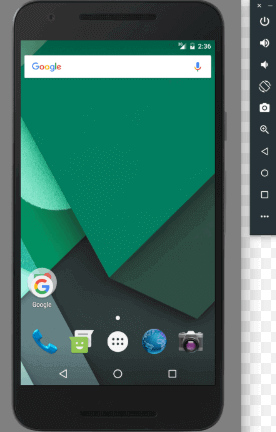
Testing Android applications on emulator are sometimes faster and easier than doing on a real device. For example, we can transfer data faster to the emulator than to a real device connected through USB. The Android emulator comes with predefined configurations for several Android phones, Wear OS, tablet, Android TV devices. Requirement and recommendations
The Android emulator takes additional requirements beyond the basic system requirement for Android Studio. These requirements are given below:
Install the emulator
The Android emulator is installed while installing the Android Studio. However some components of emulator may or may not be installed while installing Android Studio. To install the emulator component, select the Android Emulator component in the SDK Tools tab of the SDK Manager. Run an Android app on the Emulator
We can run an Android app form the Android Studio project, or we can run an app which is installed on the Android Emulator as we run any app on a device. To start the Android Emulator and run an application in our project: 1. In Android Studio, we need to create an Android Virtual Device (AVD) that the emulator can use to install and run your app. To create a new AVD:- 1.1 Open the AVD Manager by clicking Tools > AVD Manager. 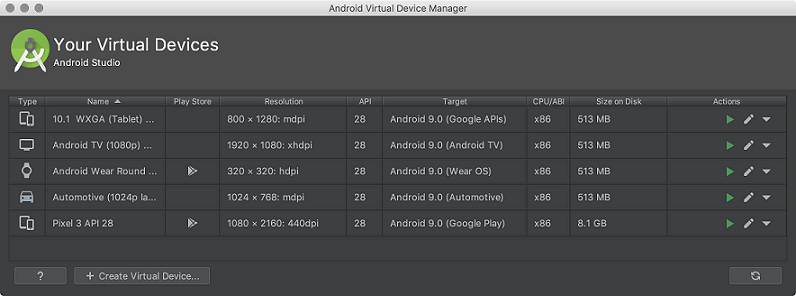
1.2 Click on Create Virtual Device, at the bottom of the AVD Manager dialog. Then Select Hardware page appears. 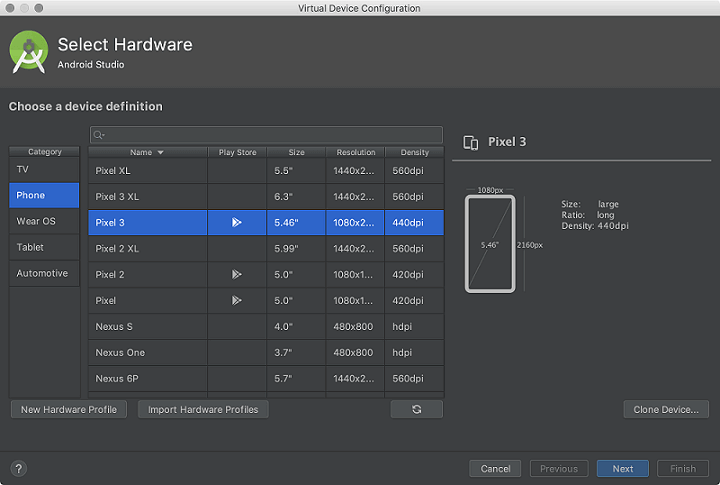
1.3 Select a hardware profile and then click Next. If we don?t see the hardware profile we want, then we can create or import a hardware profile. The System Image page appears. 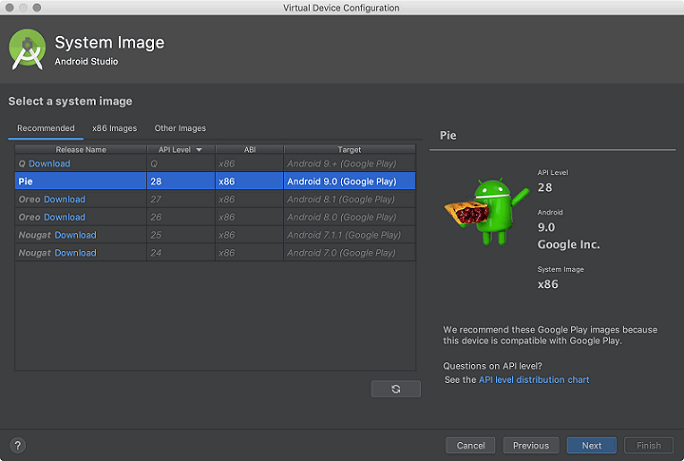
1.4 Select the system image for the particular API level and click Next. This leads to open a Verify Configuration page. 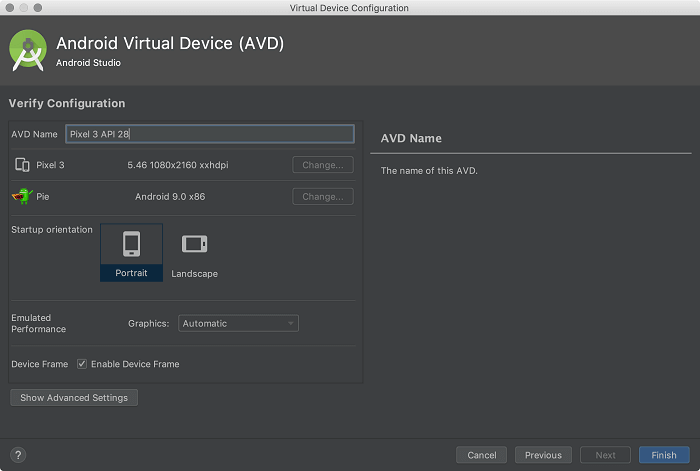
1.5 Change AVD properties if needed, and then click Finish. 2. In the toolbar, choose the AVD, which we want to run our app from the target device from the drop-down menu. 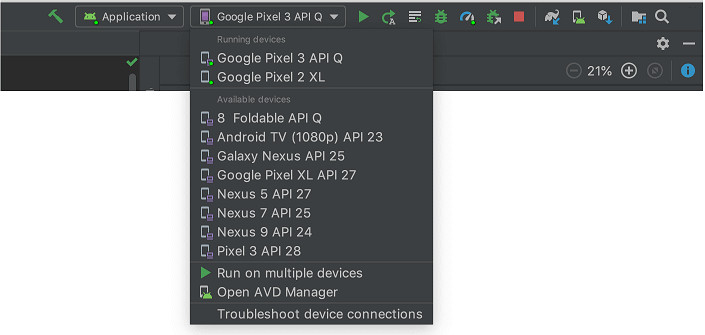
3. Click Run. Launch the Emulator without first running an appTo start the emulator:
While the emulator is running, we can run the Android Studio project and select the emulator as the target device. We can also drag an APKs file to install on an emulator, and then run them. Start the emulator from the command lineThe Android SDK includes the Android device emulator. Android emulator lets you develop and test out the application without using a physical device. Starting the emulatorUsing the emulator command, we will start an emulator. It is an alternative to run our project or start through the AVD Manager. Here is the basic command-line syntax for starting a virtual device:
$ emulator -avd avd_name [ {-option [value]} ... ]
or
$ emulator @avd_name [ {-option [value]} ... ]
For example, if we execute the emulator from Android Studio on a Mac, the default command line will be similar as follows: $ /Users/user_name/Library/Android/sdk/emulator/emulator -avd Nexus_5X_API_23 -netdelay none -netspeed full To display the list of AVD names, enter the following command: $ emulator -list-avds Run and stop an emulator, and clear dataFrom the Virtual Device page, we can perform the following operation on emulator: 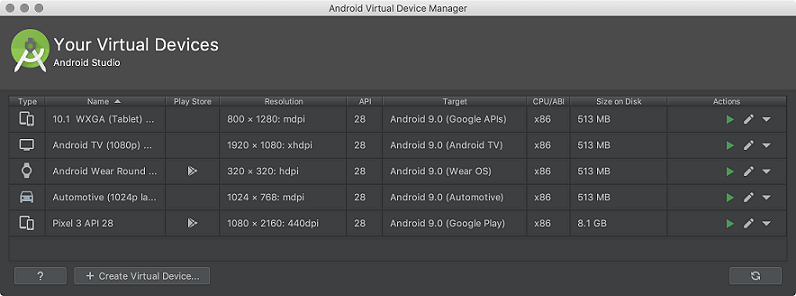
Next TopicInstalling Softwares For Android
|
Related Links:
- Android MediaRecorder example
- Learn Android Tutorial | Android Studio Tutorial
- Android Custom RadioButton
- Android AlertDialog Example
- Android Spinner Example
- Android Versions
- Android Watch
- Android Seekbar example
- Android DatePicker Example
- Android TimePicker Example
- Android Sqlite Tutorial
- Android SQLite Example with Spinner
- Android XML Parsing using SAX Parser
- Android RSS Feed Reader
- Android Linkify Example
- Android AutoCompleteTextView Example
- Android ListView Example
- Android AlarmManager
- Android Google Map Search Location using Geocodr
- Android Emulator
- Android Auto
- Android File Transfer
- Android Hide Title Bar Example
- Android TextToSpeech Tutorial
- Android TextToSpeech Example
- Android Volley Library - Registration, Log-in, and Log-out
- Android ScrollView Horizontal
- Android Network Connectivity Services
- Android Messages
- Android Oreo
- Android TV
- Android Screenshot
- Android Custom CheckBox
- Android RadioButton
- Android Dynamic RadioButton
- Android StartActivityForResult Example
- Android Share App Data
- Android Fragments
- Android Simple Graphics Example
- Android Animation Example
- Android Image Switcher
- Android Image Slider
- Android Quiz | Android Online Test
- Android Option Menu Example
- Android Context Menu Example
- Android Popup Menu Example
- Android Web Service | Android Restful Web Service
- Android Google Map
- Android Google Map displaying Current Location
- Android Service Tutorial
- Android External Storage Example - TheDeveloperBlog.com
- Adding Android Interstitial Ads
- Android QR Code / Bar Code Scanner
- Android Custom ListView
- Android RatingBar Example
- Android WebView Example
- Android Preferences Example
- Android Internal Storage Example - TheDeveloperBlog.com
- Android Analog Clock and Android Digital Clock Example
- Android ProgressBar Example
- Android ScrollView Vertical
- Android XML Parsing using DOM Parser
- Android XMLPullParser Tutorial
- Android JSON Parsing Tutorial
- Android ViewStub
- Android Intro Slider Example
- Android RecyclerView List Example
- Android Swipe to Delete RecyclerView items with UNDU
- Android Telephony Manager Tutorial
- Android Call State Example
- Android Call State BroadCastReceiver Example
- Android Firebase Authentication - Google Login
- Android Notification
- Android TabLayout
- Android TabLayout with FrameLayout
- Android SearchView
- Android SearchView on Toolbar
- Android Caller talker example
- Integrating Google Sign-In in Android App
- Integrating LinkedIn API in Android App
- Integrating Twitter API in Android App
- Android Device Manager
- Android Studio
- Android Interview Questions (2021)
- Android EditText with TextWatcher
- Android Activity Lifecycle
- Android Screen Orientation Example
- Android Intent Example
- Android Explicit Intent Example
- Android Bluetooth Tutorial
- Android bluetooth list paired devices example
- Android Wifi Example
- Android Camera Tutorial
- Android Sensor Tutorial
- Android Custom Toast Example
- Android ToggleButton Example
- Android Checkbox Example | Food Ordering Example
- What is android
- History of Android
- Android Architecture | Android Software Stack
- Android Core Building Blocks | Fundamental Components
- Android Widgets Tutorial
- Android Button Example
- Android Toast Example
- Adding Android Google Admob
- Adding Android Banner Ads


